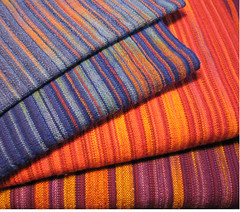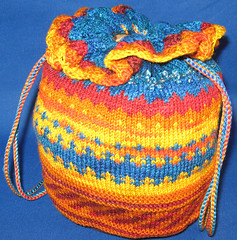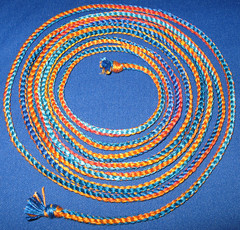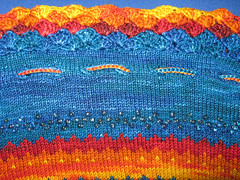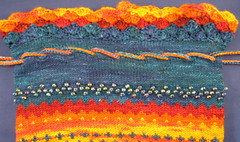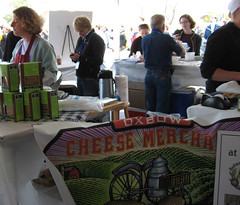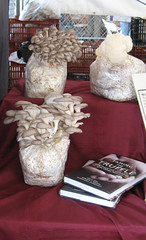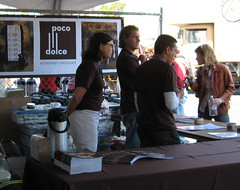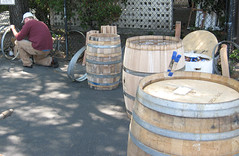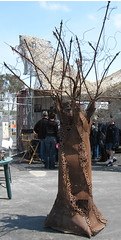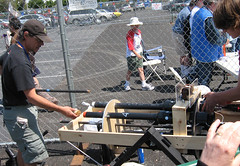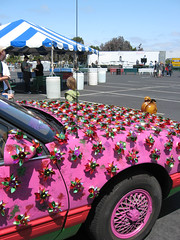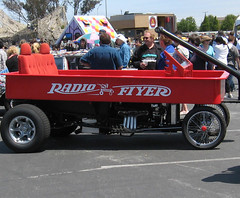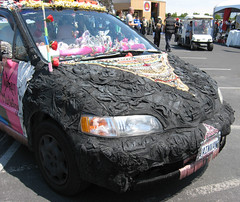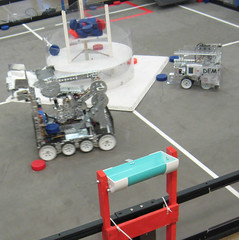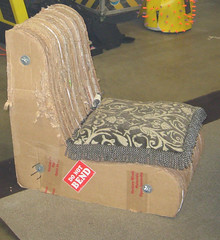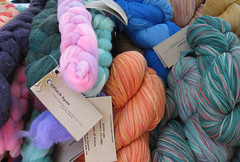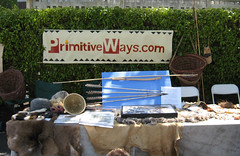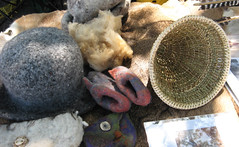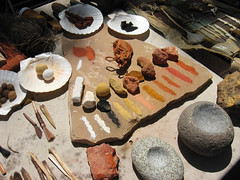Credentials
I'm getting ready to head off to Olds College, for Fibre Week.
"Getting Ready" involves walking myself through every day, making sure I have the necessary supplies or that I requested them, making sure I have the right samples, the right equipment, making sure I have the right clothing (the right clothing for a dye day is different from the right clothing for a weaving class), and last, in this case, making sure I have the right slides for any presentations.
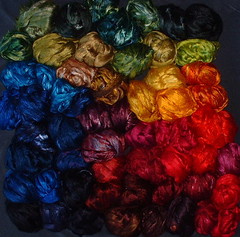
I will give a couple of lectures: one for the Nickel Arts Museum, in Calgary, Friday, for their lunchtime lecture series, and one for Olds, as the keynote lecture for Sunday evening.
Olds Fibre Week revolves around the Master Spinner Program. This program is rigorous, and very impressive. After 6 years of classes, spinning different fibers, using a variety of equipment and with lots of documentation, spinners receive a Master Spinner Certificate, a credential. There is grading involved, judging, weighing and measuring. It is humbling and astounding to see the workbooks produced in those six years of study, and I am envious of the people who can take advantage of the depth and breadth of the program.

This year, the first year of a Master Weaver program is also beginning at Olds, and I would love to eventually see the binders of samples, the products these new weavers will produce in their quest to Master Weaver certificates.
I am (and I know I repeat myself) envious of those weavers, of the choices they will be competent to make once they have tried so much of what there is to know in weaving. I found my own path through trial and error, and, while I do not wish to change direction, wonder if things might have been different if I had a programs such as these in the beginning years of my learning the crafts.
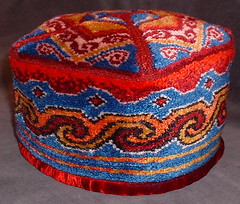
As weavers, we have very few University credentialing programs, and those few usually produce artists who have little or no interaction with the guild system that I belong to, and to the conferences I attend. One of the rare exceptions is my friend Bonnie Tarses, a graduate of RISD, and a longtime professional weaver, who came reluctantly to the guild system and happily found her place among us.
Most of us, on the other hand, learned to weave from someone, who learned from someone else, who learned from a book and a few classes, or from an elder in the family, etc. We take classes at conferences and guild workshops, share with our weaver-friends and get feedback from them and from the work itself over the passage of time.
Then we practice for 10, 20 or 30 years. We pass on what we know to new weavers, who (yay!) seem to be increasing in numbers recently.
My *slides* are now digital images. I have been poring over images of spinning, dyeing, knitting and weaving, looking for a common thread (heh) for people to catch as they listen. It is fun, if somewhat akin to navel-gazing, to look over years of textiles.
The work I have produced comprises my credentials, so to speak. No neat and tidy piece of paper with a date on it, to prove competence or familiarity. Just a body of work, reflecting many years of fascination, effort and exploration.
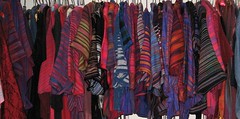
"Getting Ready" involves walking myself through every day, making sure I have the necessary supplies or that I requested them, making sure I have the right samples, the right equipment, making sure I have the right clothing (the right clothing for a dye day is different from the right clothing for a weaving class), and last, in this case, making sure I have the right slides for any presentations.

I will give a couple of lectures: one for the Nickel Arts Museum, in Calgary, Friday, for their lunchtime lecture series, and one for Olds, as the keynote lecture for Sunday evening.
Olds Fibre Week revolves around the Master Spinner Program. This program is rigorous, and very impressive. After 6 years of classes, spinning different fibers, using a variety of equipment and with lots of documentation, spinners receive a Master Spinner Certificate, a credential. There is grading involved, judging, weighing and measuring. It is humbling and astounding to see the workbooks produced in those six years of study, and I am envious of the people who can take advantage of the depth and breadth of the program.

This year, the first year of a Master Weaver program is also beginning at Olds, and I would love to eventually see the binders of samples, the products these new weavers will produce in their quest to Master Weaver certificates.
I am (and I know I repeat myself) envious of those weavers, of the choices they will be competent to make once they have tried so much of what there is to know in weaving. I found my own path through trial and error, and, while I do not wish to change direction, wonder if things might have been different if I had a programs such as these in the beginning years of my learning the crafts.

As weavers, we have very few University credentialing programs, and those few usually produce artists who have little or no interaction with the guild system that I belong to, and to the conferences I attend. One of the rare exceptions is my friend Bonnie Tarses, a graduate of RISD, and a longtime professional weaver, who came reluctantly to the guild system and happily found her place among us.
Most of us, on the other hand, learned to weave from someone, who learned from someone else, who learned from a book and a few classes, or from an elder in the family, etc. We take classes at conferences and guild workshops, share with our weaver-friends and get feedback from them and from the work itself over the passage of time.
Then we practice for 10, 20 or 30 years. We pass on what we know to new weavers, who (yay!) seem to be increasing in numbers recently.
My *slides* are now digital images. I have been poring over images of spinning, dyeing, knitting and weaving, looking for a common thread (heh) for people to catch as they listen. It is fun, if somewhat akin to navel-gazing, to look over years of textiles.
The work I have produced comprises my credentials, so to speak. No neat and tidy piece of paper with a date on it, to prove competence or familiarity. Just a body of work, reflecting many years of fascination, effort and exploration.

